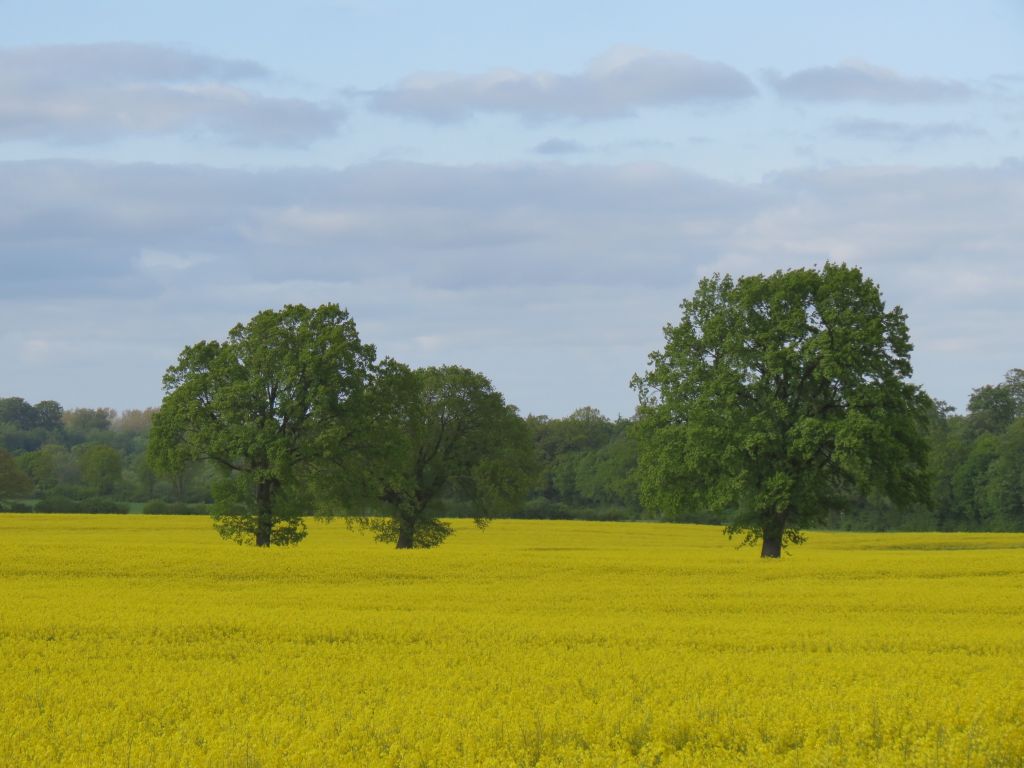Youth constitute the majority of the population in many countries and may be more aware of their social and ecological ecosystems than other generations. In addition, UN data demonstrates that around 73% of youth say they currently feel the effects of climate change. These factors lead many young farmers to prioritize climate adaption and mitigation on their farms.
To learn more about the actions the next generation of farmers are taking to protect soil health and reduce the impact of climate change, we spoke with young farmers from Zimbabwe and Germany. These interviews have been formatted and adapted from their original recordings for length and clarity.
We’ve also implemented precision farming techniques on our farm. We sample our soil every three to five years. We have a map that shows us how the soil quality differs from within the field, allowing us to start sowing the weaker parts. We use fertilizer and crop protection to address the weaker parts of the field.

We’re also recording yields. We have a yield monitor on our harvester so we can see how the yields differ throughout the field. I’m also working to minimize the passes we do over the fields to help improve soil quality.

This year, I decided to venture into farming. I’m growing maize and soy at the moment. I use plant science innovations to help improve soils and increase my yields. I’m still familiarizing myself with the soil type of the farm: what works there, what does not work. I’m hoping to go into horticulture. So far, I’m looking at three key crops: onions, garlic and hemp for industrial purposes.
There needs to be more awareness around this issue and how to tackle it. Firstly, the impacts of overgrazing. In our culture, cattle are a form of wealth. Some people have over 100 cattle and a small piece of land. The cattle will end up getting into other people’s pastures, leading to overgrazing. Farmers also need to know how to practice good farming practices, like no-till, that will decrease disturbance of the soil.
To address climate change, farmers should try to ensure that they use good farming practices including drip irrigation. Most importantly, they should maintain their dams to avoid siltation. Installing drip irrigation systems helps farmers be more efficient and use less water. Using fertilizers or other biological practices can also improve the soil, leading to higher yields.

Changes in weather mean that we tend to experience a natural disaster every five years now, and drought is a huge problem for our farmers. This means we probably only have about five or six chances to become food secure by 2030, as in some seasons we may lose crops or have reduced yields.
Therefore, achieving the Agenda 2030 becomes very difficult if we do not invest in our farmers, in healthy soils, in infrastructure development, in irrigation, in trade. We will never be able to feed the continent – or rather the world with non-GM maize and non-GM products. We need to capacitate our farmers with a conducive environment so that they’re able to produce, this includes access to finance, as financing is key.
Young farmers around the world are concerned about climate change and orient their agricultural practices to help mitigate the impacts of environmental threats. As farmers like Bumann and Mununga continue to adopt sustainable and innovative farming methods, they are helping to strengthen food chains, protect soil health and ensure sustainable food supplies in the years to come.
To learn more about young farmers around the world, follow the World Farmers Organization.
Carbon knowledge exchange sponsored by Trinity Agtech

To see more resources from TrinityAgTech then click here.
To learn more about the actions the next generation of farmers are taking to protect soil health and reduce the impact of climate change, we spoke with young farmers from Zimbabwe and Germany. These interviews have been formatted and adapted from their original recordings for length and clarity.
 HANNES BUMANN, GERMANY
HANNES BUMANN, GERMANY

Can you please introduce yourself and tell us a little bit about your farm?
I am Hannes Bumann. I am 25 years old and am currently completing my master’s degree on crop production and environmental science at the University of Rostock. I was born and raised on a family farm in North-West Germany. The farm is a typical crop farm with a focus on cereal production, including high-protein winter wheat. My family has operated this farm for 150 years now. I am proud to be the next generation of my family farming here.What farming practices do you leverage to diminish the impacts of climate change?
We are experiencing more and more severe weather events. We can’t influence the weather, but we try to at least reduce the risk to our crops as much as we can. There’s a whole bunch of production techniques that we’re trying to work with. When I’m planning the next harvest, I always start with winter wheat, oilseed rape and barley. These crops are drought resistant and have a high development use rate. We want a variety that grows fast in autumn, so we’ll have a great crop to harvest before winter. We also prioritize varieties that don’t grow too high so they’re less impacted by winds.How do you manage your soil health?
We use cover crops to protect the soil as much as we can. If we don’t cover the soil during the autumn wet season, we experience quite a bit of runoff. Cover crops also help to level the organic matter in soil which leads to better water retention in the soil. More farmers should be covering their soil all year round to tackle soil erosion.We’ve also implemented precision farming techniques on our farm. We sample our soil every three to five years. We have a map that shows us how the soil quality differs from within the field, allowing us to start sowing the weaker parts. We use fertilizer and crop protection to address the weaker parts of the field.

We’re also recording yields. We have a yield monitor on our harvester so we can see how the yields differ throughout the field. I’m also working to minimize the passes we do over the fields to help improve soil quality.
Do crop protection practices help you secure stronger yields?
We use integrated pest management (IPM) techniques to minimize using chemical crop protection. A lot of the broader population wants more organic produce and more organic farming, but, without chemical crop protection, we’re probably losing about 40 to 50% of our yields. There is no way to have high yields without growth regulators. And fungicides are a big part of the equation, too, as fungus infections are usually weather-based and can develop very fast.
How are climate change and soil health connected?
I think it is the responsibility of the farming sector to work against climate change. Many people see agriculture as one of the drivers of climate change. I actually think farming has the potential to stop climate change. It is important for farmers and policymakers to be aware of the possibilities associated with carbon sequestration so farming can be part of the solution to climate change.
 CHRISPEN MUNUNGA, ZIMBABWE
CHRISPEN MUNUNGA, ZIMBABWE

Can you please introduce yourself and tell us a little about your work?
My name is Chrispen Mununga and I’m an economist with the Commercial Farmers’ Union of Zimbabwe. I’m also completing my master’s degree in Data Analytics.This year, I decided to venture into farming. I’m growing maize and soy at the moment. I use plant science innovations to help improve soils and increase my yields. I’m still familiarizing myself with the soil type of the farm: what works there, what does not work. I’m hoping to go into horticulture. So far, I’m looking at three key crops: onions, garlic and hemp for industrial purposes.
How can soil erosion be prevented in Zimbabwe?
In Zimbabwe, we experienced quite a bit of soil erosion and disturbance of the soil, mainly due to poor farming practices when farms were set-up twenty years ago after the Land Reform Program.There needs to be more awareness around this issue and how to tackle it. Firstly, the impacts of overgrazing. In our culture, cattle are a form of wealth. Some people have over 100 cattle and a small piece of land. The cattle will end up getting into other people’s pastures, leading to overgrazing. Farmers also need to know how to practice good farming practices, like no-till, that will decrease disturbance of the soil.
Will you practice no-till farming on your farm?
Yes. It’s an issue of creating a relationship with the soil. If I want to get better yields in the future, I must make sure that I maintain the soil. By practicing no-till, I will disturb the soil less and keep more nutrients in the soil.How does climate change affect Zimbabwean farmers?
Climate change affects farmers’ yields. Production and productivity have gone down.To address climate change, farmers should try to ensure that they use good farming practices including drip irrigation. Most importantly, they should maintain their dams to avoid siltation. Installing drip irrigation systems helps farmers be more efficient and use less water. Using fertilizers or other biological practices can also improve the soil, leading to higher yields.
What are the benefits of using plant science innovations and how can they help farmers tackle climate change and soil erosion?
Plant science innovations are very useful as they help to rebuild the soil and return it to its previous state. They can also help farmers to obtain higher yields. We’ve been working with BASF quite a lot over the last two years. They provide trainings for farmers on the responsible use of crop protection products, for example when and how to spray. They advise farmers on technical issues so that farmers can nurture the soil and maintain the nutrients present in soil.
Are we on track to achieve the United Nations Agenda 2030 for Sustainable Development, including eradicating hunger?
We are only nine planting seasons away from the 2030 decade of action and being food sustainable. Yet the nine years leading up to today were very difficult for farmers.Changes in weather mean that we tend to experience a natural disaster every five years now, and drought is a huge problem for our farmers. This means we probably only have about five or six chances to become food secure by 2030, as in some seasons we may lose crops or have reduced yields.
Therefore, achieving the Agenda 2030 becomes very difficult if we do not invest in our farmers, in healthy soils, in infrastructure development, in irrigation, in trade. We will never be able to feed the continent – or rather the world with non-GM maize and non-GM products. We need to capacitate our farmers with a conducive environment so that they’re able to produce, this includes access to finance, as financing is key.
Young farmers around the world are concerned about climate change and orient their agricultural practices to help mitigate the impacts of environmental threats. As farmers like Bumann and Mununga continue to adopt sustainable and innovative farming methods, they are helping to strengthen food chains, protect soil health and ensure sustainable food supplies in the years to come.
To learn more about young farmers around the world, follow the World Farmers Organization.
Carbon knowledge exchange sponsored by Trinity Agtech

To see more resources from TrinityAgTech then click here.





